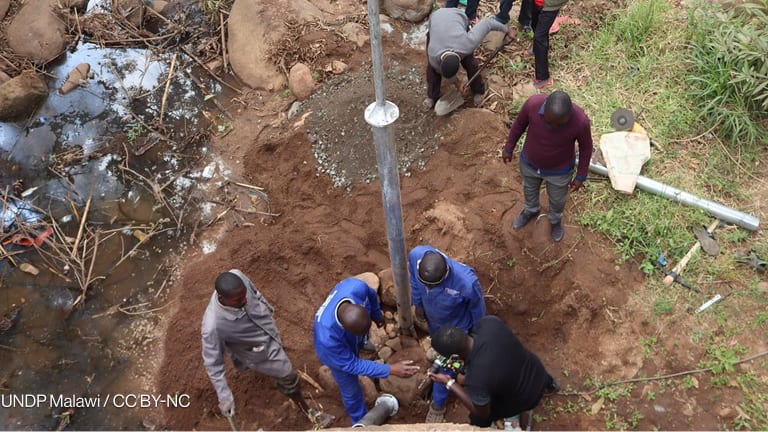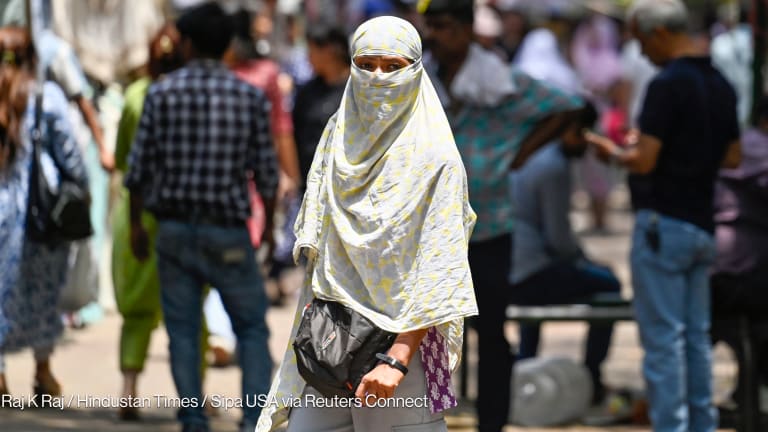
Flooding from typhoons and monsoon rains was considered the worst natural disaster in 2012, displacing more than 22 million people. The majority of the affected people are based in India, Nigeria, the Philippines and Pakistan — the same countries now considered extremely vulnerable to the impact of climate change.
In a report released last week, global risk and strategic consulting firm Maplecroft ranked 193 countries according to their level of exposure and sensitivity to “extreme climatic events,” and their governments’ ability to respond to these changes. Apart from severe flooding, the changing global climate can result in more frequent and intense forest fires, droughts, food insecurity and extinction of some plant and animal species. All of these can have an impact on a country’s population, economy and infrastructure.
The Climate Change Vulnerability Index 2014 classified these countries into four risk levels: extreme, high, medium and low. Including India, Nigeria, the Philippines and Pakistan, 33 countries are classified as extremely at risk from the effects of climate change. Sixty-one percent of these countries are based in sub-Saharan Africa, including 14 heavily indebted, low-income economies.

Click on the image to view a larger version
Hunger, malnutrition woes in sub-Saharan Africa
The threat to sub-Saharan Africa comes mainly in the form of drought, food insecurity and species extinction, according to a report the World Bank released in June. The region has already been dealing with the effects of these crises, which have been affecting millions of people, but climate change is likely to exacerbate the negative impact of such disasters.
Ethiopia (10), for instance, is among the East African countries affected by the severe drought in the Horn of Africa between July 2011 and August 2012, which afflicted more than 13 million people. The U.N. Central Emergency Response Fund has disbursed nearly $170 million in humanitarian assistance to the region since 2011, while donors have provided more than $330.6 million in the same period.
In the Sahel region, meanwhile, droughts are a recurring problem. The region — which covers South Sudan (5), northern Nigeria (6), Eritrea (11), Chad (13), Senegal (14), the Gambia (15), Niger (18), Sudan (21), Cameroon (28) and Burkina Faso (31) — has faced two incidences of drought in the past three years alone: first in 2010, when almost half of Niger’s population and more than 2 million people in Chad faced food insecurity; then again in 2012, when an estimated 15 million people were food insecure.
But more than the vulnerabilities that come as a result of being located so close to the Sahara, countries in the region are extremely sensitive to extreme climatic events because many have weak economies and governance structures, education and health care are woefully inadequate, and corruption is deeply entrenched. These factors mean communities and local government units are often ill-prepared to handle the effects of widespread drought and famine. Many of them are also unlikely to have mitigation and adaptation measures in place.
In a joint news conference, U.N. Secretary-General Ban Ki-moon and World Bank President Jim Yong Kim announced that they will be traveling to the Sahel this week to help governments in the region “address the root causes of poverty, conflict and helplessness.” In particular, the World Bank plans to focus its engagement on strengthening irrigation systems, supporting pastoralism and improving agriculture in the region.
Asia under water
In South and Southeast Asia, on the other hand, climate change is likely to worsen massive flooding, the same World Bank report says. In Maplecroft’s index, 33 percent of extremely at risk countries are based in those two regions.
Monsoon floods in the northeastern states of Assam and Arunachal Pradesh displaced 8.9 million people in India (20) between June and September 2012. A month later, Cyclone Nilam hit southern India, forcing 210,000 people in the states of Andhra Pradesh and Tamil Nadu to leave their homes. This June, devastating floods swept through Uttarakhand in northern India, leaving an estimated 5,700 people dead. Last month, Cyclone Phailin caused massive destruction in eastern India, killing at least 45 and affecting around 12 million people.
In July 2010, heavy rains inundated one-fifth of Pakistan (24), resulting in nearly 1,800 deaths and the destruction of livelihood, infrastructure and property, which affected about 21 million people. In August 2011, more than 400 people died and 5.3 million people in Sindh province lost property and livelihood as a result of monsoon floods. Last year, despite drought forecasts, four provinces in Pakistan were deep in floodwater, displacing nearly 1.9 million people. Three months ago, heavy monsoon rains swept through the country once again, resulting in nearly 180 deaths and affecting more than 1.5 million people.
The Philippines (9) similarly has to deal with annual flooding. Last year, eight days of heavy monsoon rains and thunderstorms paralyzed Metro Manila and nearby provinces, flooding most of the major highways and nearly 70 percent of the metropolitan region. Torrential rains caused a landslide and rivers to overflow. Eighty-nine people died and more than 1.5 million were displaced. In December, Typhoon Bopha made landfall as a category 5 super typhoon in the southern island of Mindanao. More than 1,000 people died from the typhoon and at least 1.9 million were displaced.
Dense populations, particularly in poor urban areas, have made South and Southeast Asia especially vulnerable to severe flooding and landslides. Many people living below the poverty line often construct houses near bodies of water, railways and areas prone to soil liquefaction. As in sub-Saharan Africa, corruption is widespread in many governments in the region.
Millions in economic losses
These extreme climatic events have had a significant impact on countries’ economies. In South and Southeast Asia, where a significant portion of the population continue to rely heavily on agriculture, flooding destroys produce and crop lands. Damaged infrastructure, meanwhile, can result in deep economic losses for towns and cities whose income comes largely from tourism.
This year’s flash floods in Uttarakhand in northern India, for example, resulted in more than $20 billion in lost revenue from tourism. Last year’s monsoon floods that brought Metro Manila to a standstill led to at least $14.3 million in losses. The economic impact of Typhoon Bopha, meanwhile, is estimated to cost $780 million, or about 0.3 percent of the Philippines’gross domestic product.
The economic devastation that extreme climatic events bring is especially worrying given that several of the world’s fastest growing economies are considered extremely at risk. These include Bangladesh (1), Nigeria, the Philippines, India and Vietnam (26).
Not only does Bangladesh top the list as the country most at risk from the effects of climate change, but its capital, Dhaka, is also the city that is likely to be extremely affected by such weather-related disasters. In addition to ranking countries based on their sensitivity and ability to adapt to extreme climatic events, Maplecroft assessed 50 of the “most economically important cities” based on projected GDP growth from 2013 to 2025, among other factors.
Apart from Dhaka, Bangkok (2) in Thailand, Manila (3) in the Philippines, and Mumbai (5) and Kolkata (7) in India are among the cities ranked extremely at risk. The combined GDP of these cities is estimated to triple to $804 billion by 2025.
Read more:
Join the Devex community and gain access to more in-depth analysis, breaking news and business advice — and a host of other services — on climate change and climate finance, international development, humanitarian aid and global health.








